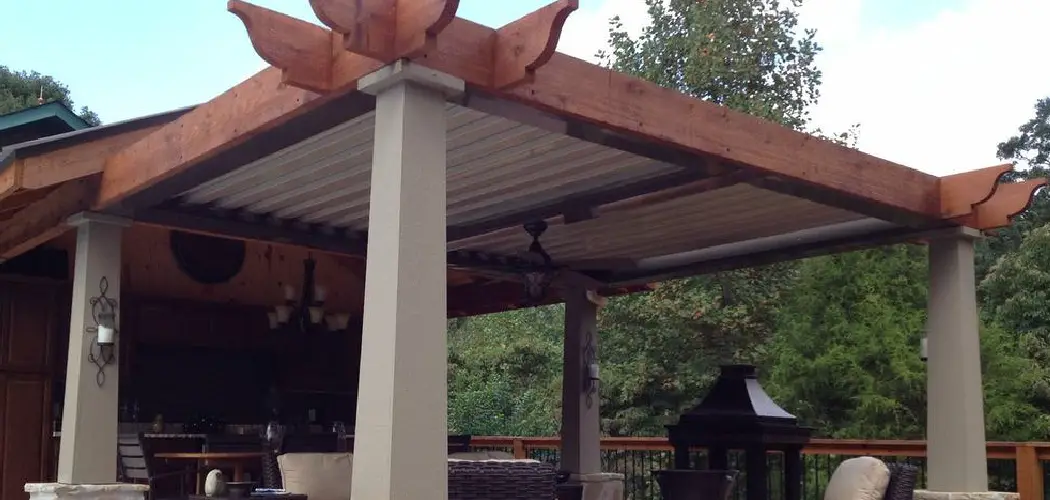Do you want to transform your backyard into a charming, versatile outdoor space with some shade and privacy? If so, building a pergola is the perfect project for you! It is important to know how to raise a pergola. Pergolas are impressive structures that can provide both aesthetic appeal and practical solutions in any garden.
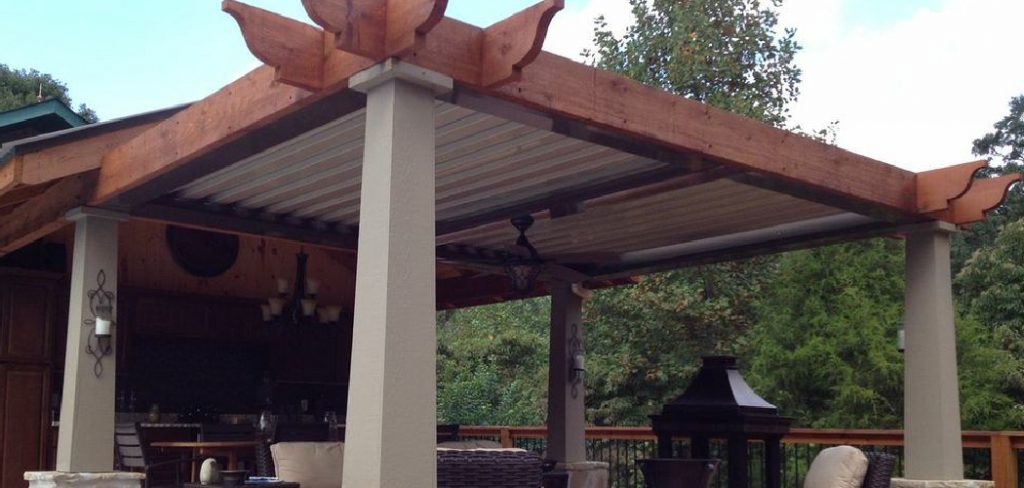
With just a few simple steps and some basic materials, you’ll have an attractive addition to your yard in no time! In this post, we’ll walk through everything from selecting the right location to assembling it correctly – plus plenty of creative design inspirations – so you can enjoy your new al-fresco oasis.
Tools You Will Need
- Hammer
- Level
- Tape measure
- Drill and bits (or a screwdriver)
- Circular saw
- Safety glasses
- Work gloves
- Post hole digger (spade or auger)
Material Needed
- Posts: These are the vertical supports of your pergola – typically 4” x 4” pressure-treated wood, but you can use metal or composite materials as well.
- Beams: Horizontal supports that connect the posts and form the frame of your pergola. Common choices include 2” x 8”s, 2” x 10”s, or 2” x 12”s.
- Joists: These are the boards that make up the slatted roof, typically 2” x 6” pressure-treated wood or metal.
- Hardware: You’ll need hinges, screws, and other fasteners to assemble your pergola.
6 Steps on How to Raise a Pergola
1. Choose the Right Location
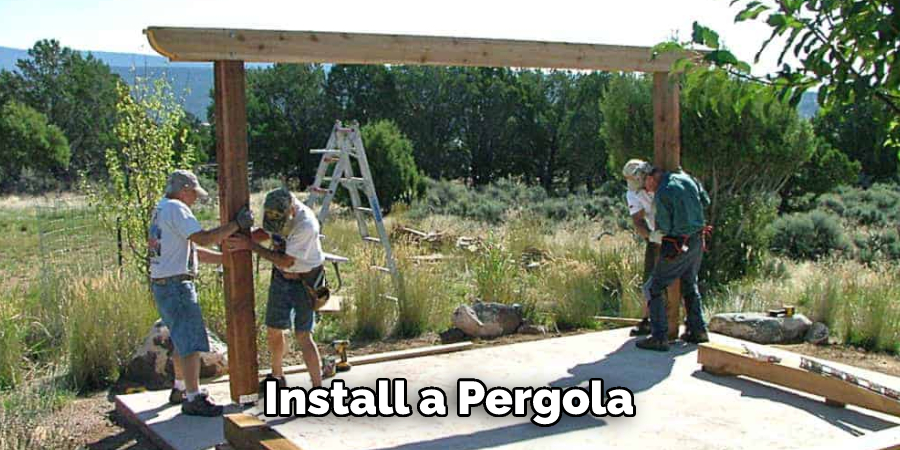
The location of your pergola is one of the most important aspects to consider. Find a spot in your yard that gets plenty of sunlight, but also offers some protection from wind and rain.
When deciding on the best spot to install a pergola, it can be tempting to go with the first sunny locale that comes to mind. Before settling on a site, however, it’s important to also consider protection from wind and rain. After all, you don’t want your outdoor furniture and any other items you plan on placing beneath the pergola to become soaked during inclement weather!
Find out what direction gusts of wind typically come in and look for spots where rain won’t pool. Additionally, make sure there are no overhead wires or branches that could obstruct your outdoor structure’s frame or prevent it from full sun coverage when necessary. Doing this due diligence upfront will result in many happy days lounging and entertaining under your new pergola.
2. Measure and Mark Your Posts
Once you know where you’ll be building, use a measuring tape to mark the location of your posts. Make sure they are equidistant from one another and the same height.
Installing your pergola can be a rewarding project, but it’s important to have all of the right measurements and marks before you begin. Familiarize yourself with the layout of your outdoor space and measure the footprints of where you want each post to go. Mark those spots using wooden stakes or paint, so that everything is visible when it’s time to put in the posts.
Measure twice and make sure you have enough room for the posts and the width of your pergola beams – this avoids any costly errors that could arise from incorrect measurements. Once everything is properly marked and mapped out, you can begin installing your beautiful new pergola with confidence!
3. Dig Your Post Holes
Use a post-hole digger or auger to create holes for each post. The size of the hole will depend on the type of posts you’re using – typically 8” wide and 24” deep.
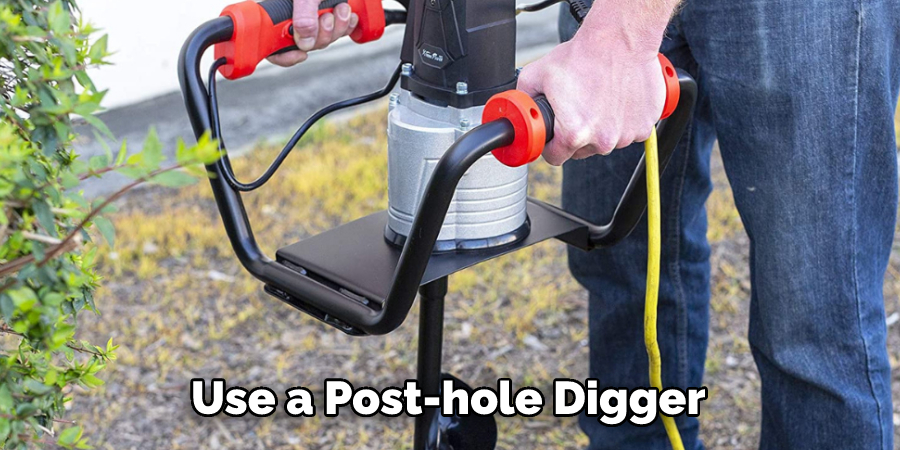
Digging post holes for your pergola can seem like a daunting task but with the right tools, it is easily achievable! Post-hole diggers or an auger are typically used to dig holes for posts of any size, It is essential to ensure the holes are dug deep enough (typically 24 inches), as this will create a sturdy foundation.
Depending on the type of posts you plan to use will determine the width of the hole (typically 8 inches). By taking your time with each post-hole and ensuring exact measurements have been noted, you can guarantee maximum stability for longevity. Digging post holes is key in your pergola build and should not be taken lightly.
4. Install Your Posts
Place the posts into their holes and check that they are level with a spirit level or carpenter’s level. Once all of your posts are in place, fill the holes with concrete and let it cure overnight.
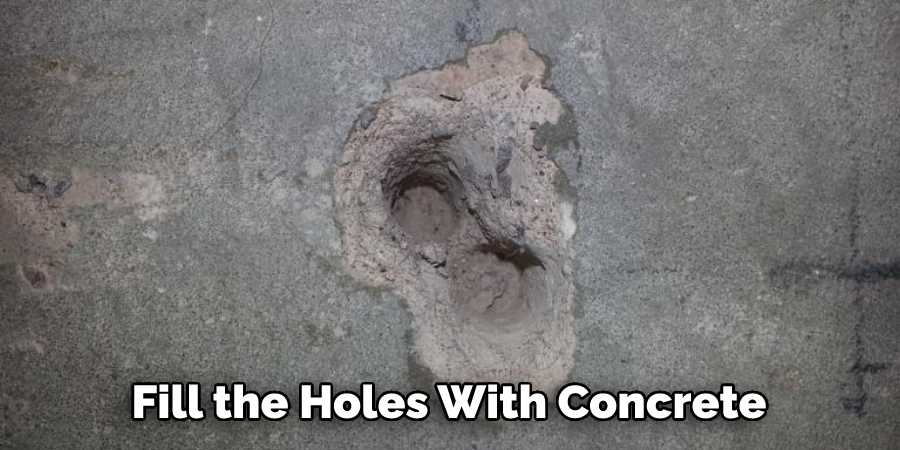
Installing Your Posts is the first major step when raising a pergola. Once you have decided on the design and purchased your posts, you should begin putting them in place. Find the spots where each post will be situated, then lower each one into its designated hole.
For an extra level of stability take a moment to check that the posts are level using a spirit or carpenter’s level. When all the posts are in place, fill any gaps with concrete and make sure it is firmly packed in. After allowing it to cure overnight you’ll have strong and sturdy posts ready to construct your dream pergola!
5. Attach Your Beams and Joists
Now it’s time to attach the beams and joists. Use brackets or lag screws to connect the posts and beams, then attach the joists to create a slatted roof.
Raising a pergola can be an intimidating project, but once you break it down into its component parts, it’s much easier. To begin, use brackets or lag screws to connect the posts and beams. Make sure that the joists are adequately spaced apart and secured together to create a sturdy foundation for your slatted roof.
Each joint should be checked and tightened thoroughly before proceeding; this will ensure that your structure is sound and able to withstand the elements. Finally, with an extra set of hands, attach the joists directly to the beams to secure them firmly in place. And voila! You’ve got yourself a pergola that won’t collapse at any moment.
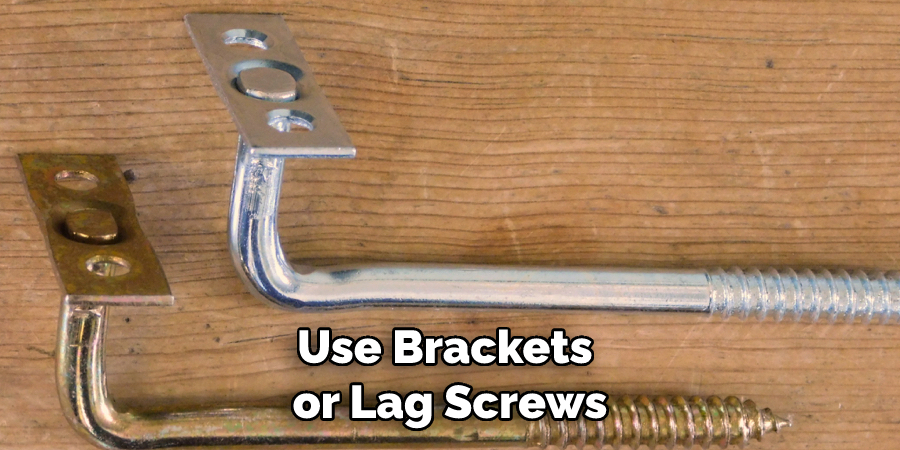
6. Add Finishing Touches
Once your pergola is assembled, you can add finishing touches like lighting, lattice panels, and curtains for extra privacy.
Adding finishing touches to a pergola can completely transform and elevate its design. For example, lighting brings life to the outdoor space, creating a beautiful and inviting atmosphere. Lattice panels are also popular for adding shape and dimension to a pergola.
This combined with curtains for privacy creates an effective slatted roof that increases protection from the elements while also retaining an open-concept layout. With just a few simple steps, your pergola can take on a whole new level of style!
And there you have it! With just a few simple steps and some basic materials, you’ll be able to create an attractive outdoor space that offers both shade and privacy. Whether you’re entertaining guests or simply enjoying the view, your pergola will provide the perfect backdrop for any occasion. So gather your tools and materials, and get started today!
Happy building!
Tips to Raise a Pergola
- When choosing a location for your pergola, it is important to consider the amount of sun and shade that the area receives. If you live in an area that experiences hot summers, you will want to choose a location that receives plenty of shade during the day. Conversely, if you live in a cooler climate, you will want to choose a location that receives plenty of suns.
- The size of your pergola will depend on the amount of space you have available and the number of people you plan on entertaining. If you have a large backyard, you may want to opt for a larger pergola. However, if you have a smaller yard or patio, a smaller pergola will suffice.
- There are a variety of materials that can be used to build a pergola. The most popular material is wood, as it is relatively inexpensive and easy to work with. However, other materials such as metal or PVC can also be used.
- Once you have decided on the location, size, and materials for your pergola, it is time to start planning the build. There are a variety of pergola plans available online or in home improvement stores. It is important to choose plans that are specific to the materials you have chosen and the size of your pergola.
- Before starting the build, it is important to prepare the area where the pergola will be located. This includes clearing away any debris, leveling the ground, and marking out the perimeter of the pergola.
- The next step is to install the footings for your pergola. This typically involves digging holes and pouring concrete into them. Once the concrete has cured, you will then need to attach post brackets to the footings.
- The next step is to install the posts for your pergola. This can be done by attaching them directly to the post brackets or by setting them in concrete footings. If using concrete footings, be sure to allow them to cure for 24 hours before proceeding.
- Once the posts are installed, it is time to install the beams and rafters for your pergola. This can be done by attaching them directly to the posts or by installing joist hangers on the posts first. If using joist hangers, be sure to use galvanized nails or screws so they do not rust over time.
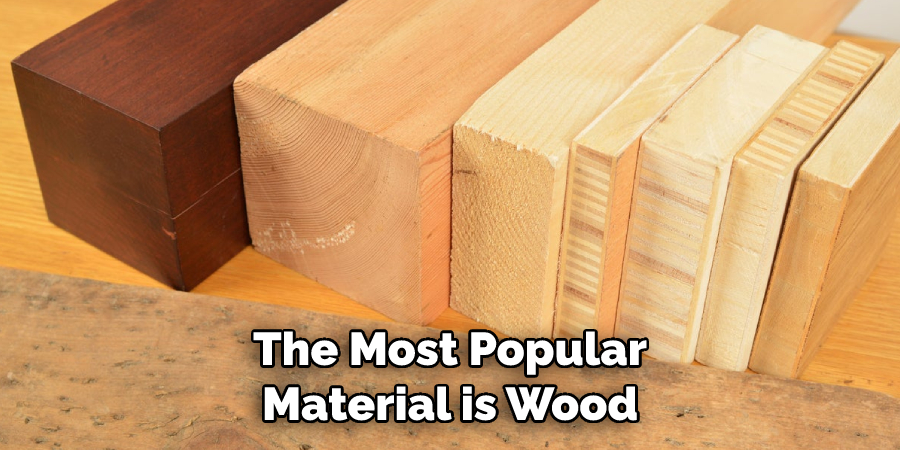
How to Create the Perfect Outdoor Space with a Pergola
Creating the perfect outdoor oasis is simple with a pergola. Not only can a pergola provide your patio or yard with shade, but it can also add style and character to any landscape. Choosing the right design for your space is essential in creating an aesthetic that fits perfectly with your yard’s theme – whether it’s rustic, modern, romantic, or minimalist.
Consider incorporating nature into the design of your pergola by stringing up lanterns or vines over the cross beams as well as placing small potted plants along the edges. If a freestanding structure is not possible due to limited space, use it to cover an existing path or patio. No matter what style you choose for your pergola, it will give homeowners a great way to spend time outdoors while enhancing their homes and yards at the same time!
How to Choose the Right Materials for Raising a Pergola
One of the most important decisions you’ll make when you’re installing a pergola is what material to use. Ideally, your choice must be both durable and budget-friendly. Perhaps the most popular option is wood – such as cedar, redwood, fir, or pine – as these are generally attractive, easy to work with, and affordable.
Those who want extra durability usually opt for composite lumber, which tends to resist warping and rot better than traditional wood. Metal is another option for those looking for something even more low-maintenance, although it can be somewhat pricier than wood or composite lumber. Regardless of what materials you choose for your pergola project, make sure you pay attention to building code regulations in your area.
How to Add Finishing Touches for an Inviting Atmosphere with Your DIY Pergolas
Homeowners who want to add an inviting feel to their backyard and outdoor living space should consider constructing a DIY pergola. With some careful planning, the right materials, and construction techniques, you can create a work of beauty that will draw your family, friends, and neighbors outdoors.
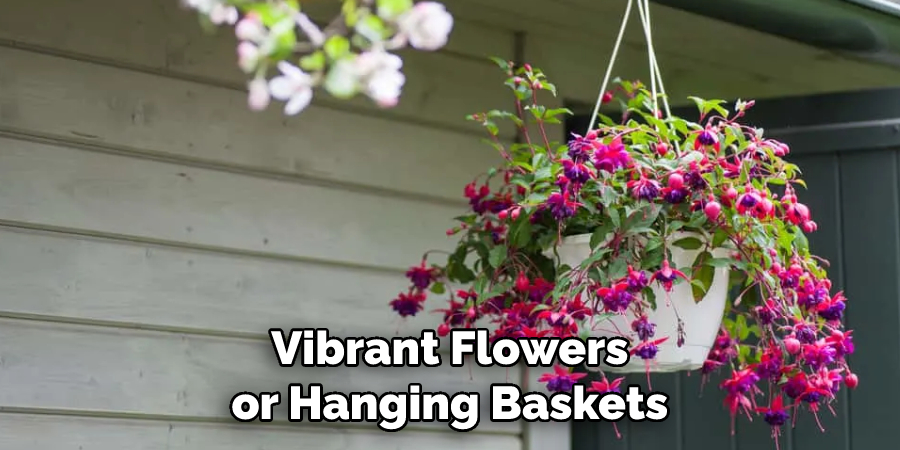
Adding these finishing touches to your DIY pergola will ensure an inviting atmosphere: a few highlighting accessories like sun-blocking shades or colorful string lights; surrounding seating, planters filled with vibrant flowers or hanging baskets of flora for a touch of nature; cushions in bold hues; and material selection—choose natural textures like cedar wood or pressure-treated pine to give your pergola harmony with its environment while providing durability against the elements. With these touches, you’ll have everyone gathering under its shelter in no time.
Conclusion
Want to add some extra living space to your home this summer? A pergola is a great way to do just that. But before you can sit back and enjoy the fruits of your labor, you need to know how to raise a pergola correctly. With our helpful tips, you’ll have no problem raising a pergola that will last for years to come. So what are you waiting for? Get started today!
You Can Check It Out to Make a Pergola Rain Proof

